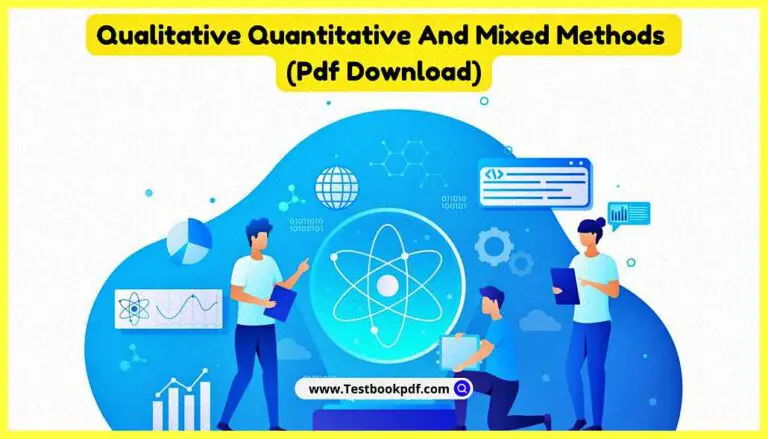Qualitative Quantitative and Mixed Methods Pdf Download (Research Design)
In this article, we are going to explore Qualitative Quantitative, and Mixed Methods Pdf Download research methodologies. We will also explain how to choose the right methodological approach for your dissertation, thesis, or research project.
we will talk about, how to go about choosing a research methodology. The three major deciding factors we looked at were:
1. What is Research
2. Nature of the research
- Exploratory
- Confirmatory
- Combination
3. Research area norms
4. Practicalities
- Data access
- Time
- Money
- Hardware and software
- Your knowledge and skills
What is Research?
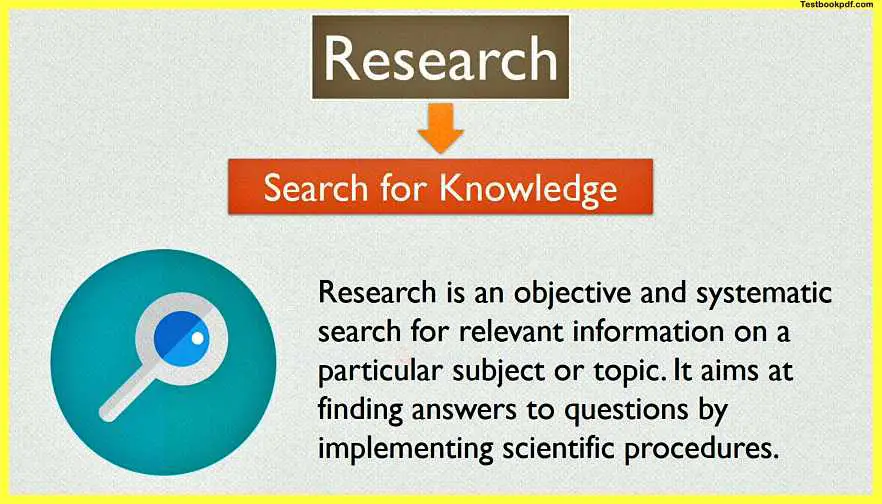
Research is an objective and systematic search for relevant information on a particular subject or topic AIMS at finding answers to questions by implementing scientific procedures.
Two Types Of Research are Famous:
- Qualitative
- Quantitative
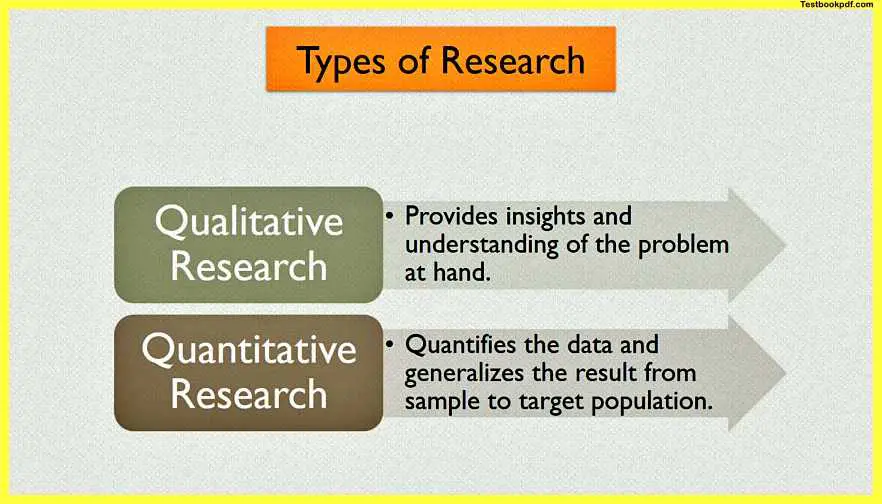
Qualitative Quantitative And Mixed Methods Research
If you are new to the wonderful world of research some of the first lingoes you will likely hear thrown around are the terms Qualitative Quantitative And Mixed Methods research. But what exactly are these? Well simply put Qualitative Quantitative And Mixed Methods reflect the three types of research that you can undertake. These are not specific data collection or analysis techniques but instead, they reflect the broader research strategies that will influence which data collection and analysis techniques you can adopt.
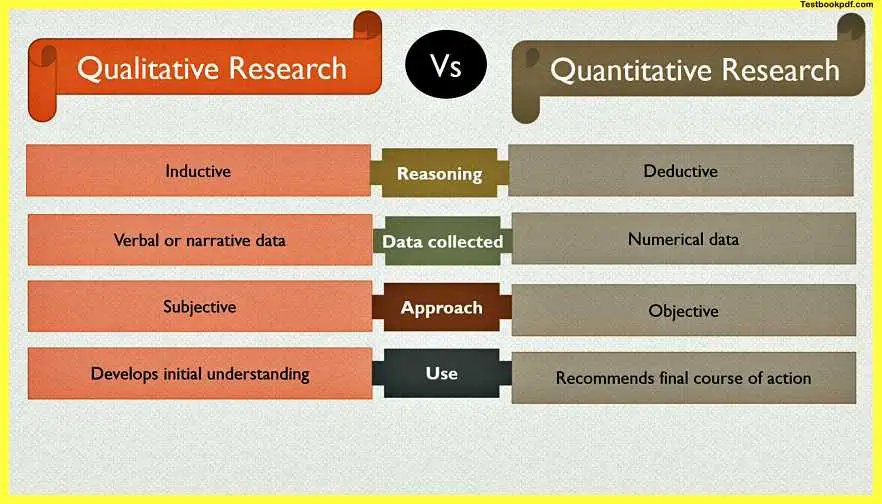
For example, if you undertake quantitative research, you will oftentimes use surveys as your data collection method and statistical analysis as your data analysis technique.
In other words Qualitative Quantitative And Mixed Methods are overarching strategies, not specific techniques or methods. Anyhow, I am getting ahead of myself. Let us take a step back and unpack each of the three types of research piece by piece. First up let us look at qualitative and quantitative research. At the most basic level, qualitative research utilizes data that is not numbers based.
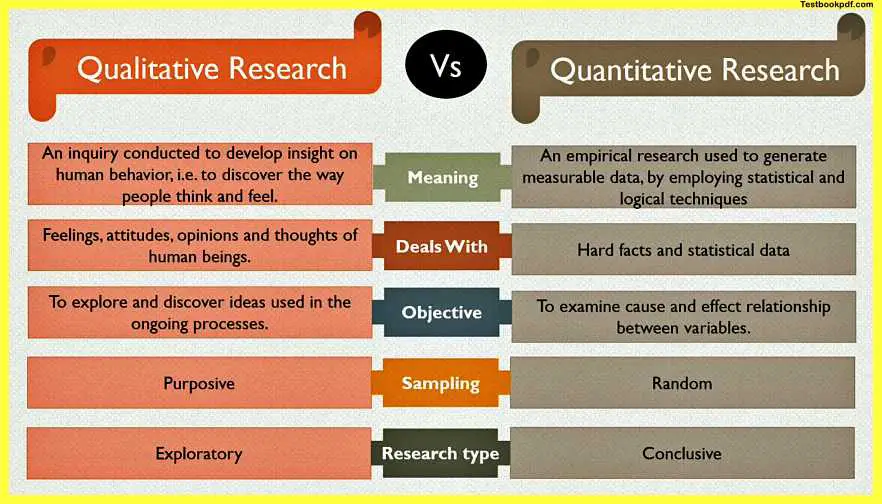
In other words, qualitative research focuses on words, concepts, perceptions, or ideas. In contrast with this quantitative research makes use of numbers and statistics. That is a very simplistic explanation though as it is just considering the type of data each one uses. So, let us dig a little deeper.
1. Qualitative research explanation & examples
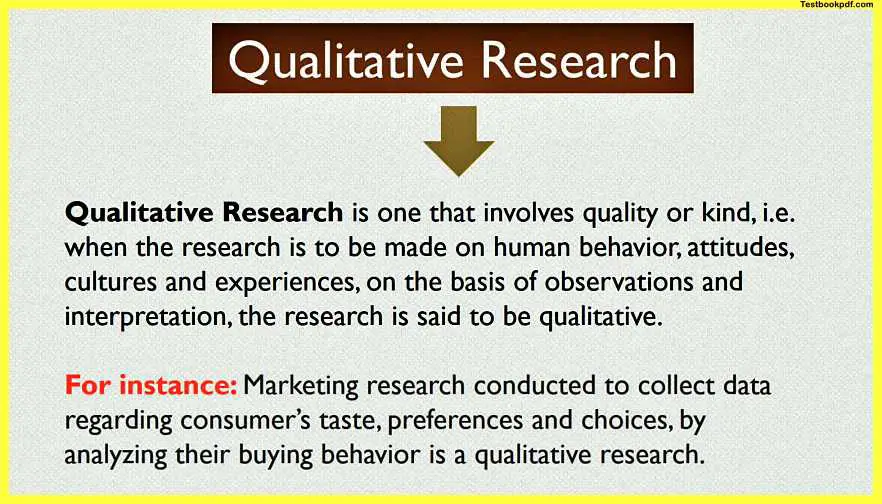
qualitative research is one that involves quality for the kind.
For example when the research is to be made on human behavior and attitudes culture and experiences on the basis of observations and interpretations the research is said to be qualitative.
for instance, marketing research conducted to collect data regarding consumer taste preferences and choices by analyzing their buying behavior is a qualitative research
Qualitative research is used to investigate the softer side of things.
For example, to explore and understand people’s perceptions, ideas, or feelings. Therefore it is more subjective in nature. Qualitative research is often used to gain a deeper understanding of the complexity of a situation to draw a rich picture of what is going on, especially what is going on under the hood. Therefore qualitative data can be used to develop hypotheses and theories from the ground up. In other words, an inductive approach.
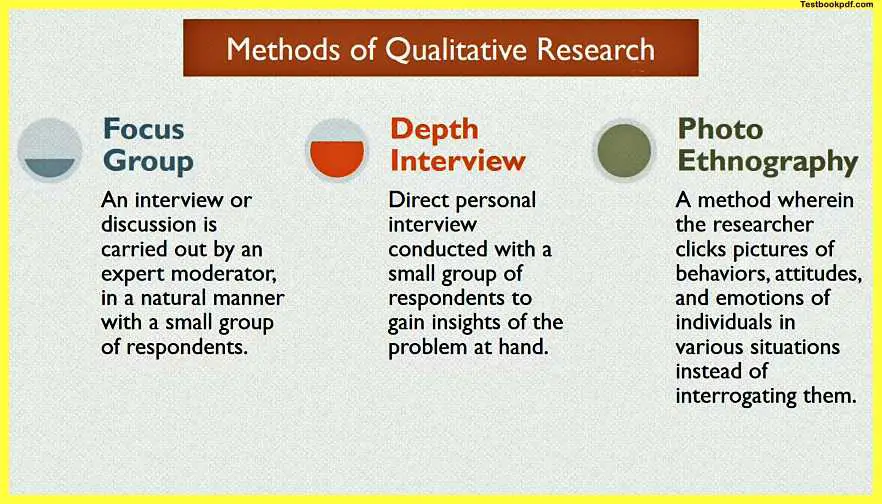
For example, you could use a qualitative approach to explore what factors or product attribute customers consider when deciding which laundry detergent to purchase. This could involve undertaking interviews and focus group sessions to get people talking about their ideas, perceptions, and feelings regarding laundry detergent.
2. Quantitative research explanation & examples

Quantitative research is a type of research methodology which tries to quantify the data and establish cause and effect relationships between variables with the help of statistical methods.
For instance, research was carried out to know the sales of various toothpaste brands in a quarter by different companies in an industry in quantitative research.
Contrasted to this quantitative research focuses on the hard numbers. Typically quantitative research is used to measure differences between groups and/or relationships between variables and test hypotheses. Therefore it is more objective in nature and takes a deductive approach.
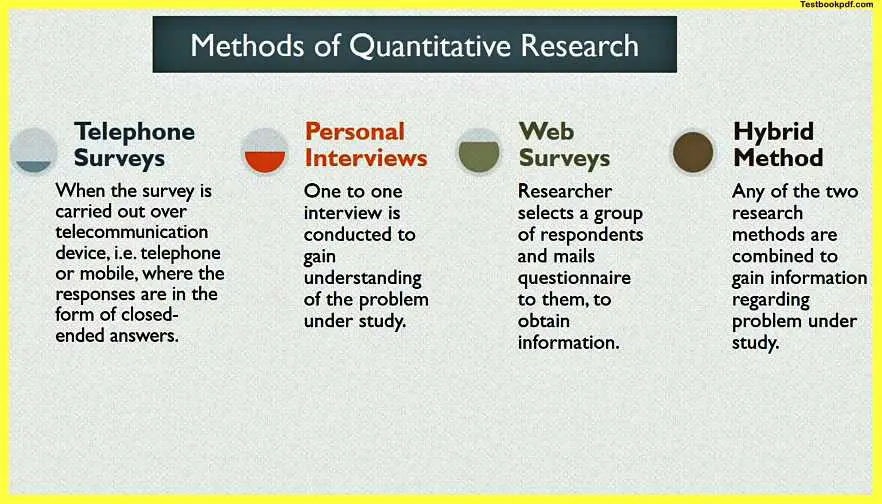
For example, you could use a quantitative approach to measure what percentage of people prioritize price or any other variable when choosing a laundry detergent. You could also assess how this percentage varies between neighborhoods, cities, or different demographic groups.
So, as you can see, qualitative and quantitative approaches can both be used to research different aspects of the same topic or area of interest. Right, moving on to mixed methods.
3. Mixed methods explanation & examples
Mixed methods-based research as you would expect attempts to bring these two types of research together drawing on both qualitative and quantitative data. Quite often mixed methods-based studies will use qualitative research to explore a situation and develop a set of hypotheses. Then once those hypotheses are established, they will use quantitative methods to test them. It can also work the other way around.
For example, they could use a quantitative approach to get a view of the bigger picture, and the what, and then use qualitative methods to explore the underlying reasons, the why, for a specific trend or observation in the quantitative data. So, as you can see while qualitative and quantitative research are distinctly different, they are not at odds with each other. It is not a competition of qualitative versus quantitative where one is better than the other. On the contrary, they can be used together.
Using a variety of strategies to create a superior piece of research. This is obviously easier said than done, therefore unless the nature of the study actually calls for a mixed methods strategy, we typically advise first-time researchers to stick to a mono method approach, either qual or quant. The most essential lesson to learn from this is that each form of research has a certain goal in mind.
For example, to explore and understand situations qualitative, to test and measure quantitative, or do both mixed methods. They are not simply interchangeable tools for the same job. Each approach has its purpose. Right, with that out of the way let us look at how you can go about choosing the right methodological approach for your research.
How to choose the right research methodology
If you are undertaking a dissertation, thesis, or research project chances are you will need to craft a comprehensive research design and methodology. This is not a task to be taken lightly as you will need to clearly and strongly justify every design choice you make. To choose the right approach you will need to consider three important factors. Based on these factors you can select your overarching approach. Qualitative Quantitative And Mixed Methods. Once you have made that decision you can flesh out the finer details of your research methodology such as the sampling strategy, data collection methods, and analysis techniques. (we discuss these separately in another article).
The three factors you need to carefully consider are:
- the nature of your research aims and research questions.
- the methodological approaches are taken in the existing literature,
- practicalities, and constraints.
#1 Factor (The Nature of Your Research Aims and Research Objective)
The first factor is the purpose of your investigation. As I already indicated, each sort of research, including qualitative, quantitative, and mixed methods, serves a unique function and aids in answering a particular kind of issue. Therefore, it makes sense that the nature of your research goals and study questions would be the primary determining factor in the approach you choose.
But what types of research aims exist?
Broadly speaking research aims can fall into one of three categories.
- Exploratory – getting a better understanding of an issue and potentially developing a theory or set of hypotheses regarding it.
- Confirmatory – confirming a potential theory or hypothesis by testing it empirically.
- A mix of both – developing a set of hypotheses and then testing them.
What does this mean for you?
As a rule of thumb, exploratory research tends to adopt a qualitative approach, whereas confirmatory research tends to use a quantitative approach. This is not set in stone but it is a reliable heuristic. Naturally then research that combines a mix of both or seeks to develop a theory from the ground up and then test that theory, would utilize a mixed methods approach.
Let’s examine a real-world illustration. If your study’s goal was to comprehend how war veterans view particular political issues, you would probably employ a qualitative methodology, interviewing participants to gather information and using one or more qualitative analysis techniques to make sense of the results. On the other hand, if the goal of your study is to compare the political leanings of veterans and non-veterans or to examine the distribution of left- and right-leaning veterans by state, you would use a quantitative methodology using survey data to fulfill your objectives.
The nature of your study aims and research questions is thus the first and most crucial factor you need to take into account when choosing which methodological technique to adopt. In particular, you must determine whether your study is exploratory, confirmatory, or a combination of both. It is critical to have a strong alignment between these three criteria and your methodology. You will be fitting a square peg into a round hole if they are out of alignment. Your research will be a disorganized mess because you’ll be utilizing the incorrect tool for the task.
A brief tip: If your research incorporates a combination of confirmatory and exploratory goals but you are working with a limited word count, you might want to think about narrowing the scope and concentrating on one or the other. A well-executed mono-method strategy has a much higher likelihood of receiving high grades than a poorly-executed mixed-methods one. Therefore, unless there are compelling reasons to use a mixed-method strategy, avoid attempting to be a hero. Right, let’s examine the following element.
#2 Factor (The Methodological Normswithin the Discipline/Research Area)
The norms of the discipline are the second factor. Looking at approaches employed by other researchers in the field and studies with comparable research aims and objectives to yours is another important step in selecting the best approach for your research. There is frequently a widely utilized methodological approach, or combination of techniques, within a discipline. Even if this does not suggest that you should blindly go along with the crowd, you should at the very least give these strategies some thought and assess their value in your own situation. You may frequently build on the data gathering strategies that other, more seasoned researchers have devised, which is a big advantage of evaluating the research methodology employed by comparable studies in your field.
For instance, you may frequently discover tried-and-true survey scales with high Cronbach’s alphas if you’re conducting a quantitative study. You don’t even need to get in touch with the original authors because these are typically included in the appendices of journal articles. By utilizing high-quality measuring tools, these scales will help you save a ton of time while ensuring that your study is built on the shoulders of giants. Of course, keep point number one in mind while you evaluate the available literature.
In other words, your study objectives and research questions must be consistent with your approach. Avoid the temptation of following other research methodological norms just because they are widely used. Okay, let’s examine the final element.
#3 Factor (Practicalities and Resource Constraints)
The third factor is practicality. There will always be a conflict when selecting a research approach between doing what is practicable given your limits and what is theoretically optimal, or the most scientifically rigorous research design. There are always trade-offs in research because that is just how it is. But what limitations, do you ask? There are a handful, so keep these in mind as you examine your methodological possibilities. You should also ask yourself some crucial questions.
1. Data Access
What data will you need to access to pull off your analysis and how likely is it that you will get this access? Also, are there any ethical clearance requirements you will need from your university?
2. Time
How much time will you need to undertake interviews or focus groups in the case of qualitative or collect a sufficient number of survey responses in the quantitative or both? If you are wanting to undertake longitudinal research, what sort of timeline will you need and will your university allow this?
3. Money
What financial resources will you need to execute your research design? Will you need to spend money on participation incentives, travel costs, snacks, drinks meeting facilities, or other services?
4. Equipment and Software
What equipment might you need for collecting data?
For example, lab equipment or recording equipment. What software will you need to analyze the data and how will you get access to this?
5. Your knowledge and skills
What is your current level of competence and experience
in terms of the data collection and analysis methods, you plan to use,
- What will you still need to learn?
- How long will this take and how confident are you in your ability to acquire the necessary skills?
- What will your backup plan be if you cannot develop the necessary skills?
As you can see there is a wide range of practicalities and constraints that you need to think about when you are deciding on your research design and methodology.
The tension between the ideal technique and the methodology that you can actually implement arises from these practical considerations, as I already explained. It is your responsibility to identify the choice that offers the optimal combination of trade-offs in this totally regular situation. You will be moving in the right direction if you carefully evaluate these three aspects and construct your methodology in a way that strikes a solid balance between research rigor and practicality or viability.
Thanks for reading this article, share it with your friends.
Read also:
All Types of Experimental Research Methods Pdf Download
Erik Erikson Stages of Development (8 Stages+Theory+Images)
Piaget Theory Of Cognitive Development Pdf Download Complete
